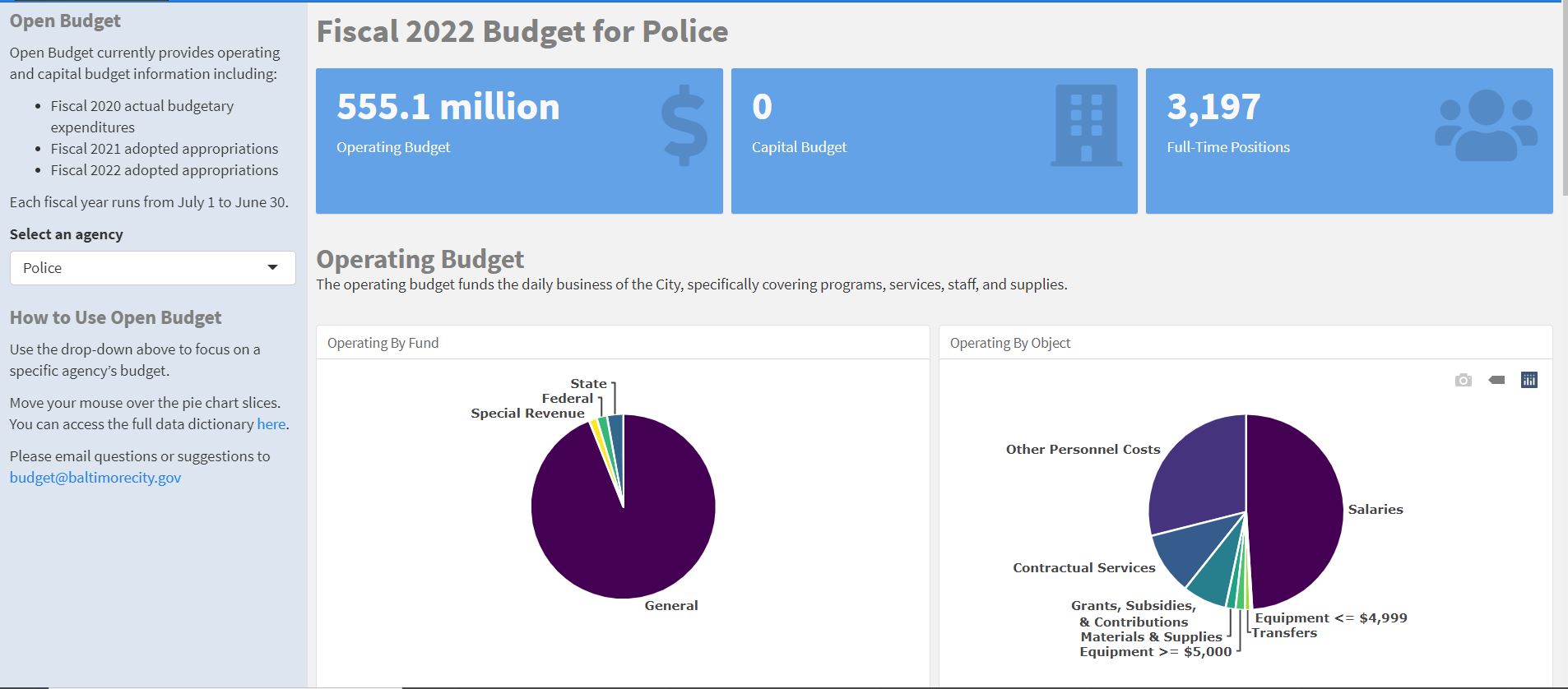A new digital tool is making Baltimore City budget allocation data available, and aiming to offer it in an easily digestible format for residents.
Open Budget was launched on Friday by the City’s Bureau of the Budget and Management Research.
Today we are proud to launch Open Budget, an interactive Fiscal 2022 budget exploration tool that allows you to easily drill into agency budgets: https://t.co/PU2I7NFG7k
If you love to tinker with data, make sure to also take a look at the associated dataset through Open Data. pic.twitter.com/q0Jd5w9e7q
— Baltimore Budget (@baltimorebudget) July 9, 2021
https://platform.twitter.com/widgets.js
The tool allows users to see data on the City’s operating budget, or the personnel and annual facility costs, and the capital budget, which are funds for major improvements to facilities and infrastructure. The data shows actual budgetary expenditures for fiscal year 2020 and the adopted appropriations for the 2021 and 2022 fiscal years.
The dashboard provides a snapshot of the spending plan, with clean, bold numbers that can be broken down at a glance. Pie charts detail where the funds for a specific agency are coming from, and where funds are expected to be sent. The data visualization elements only apply to the fiscal year 2022 budget. To look at data for the 2021 or 2020 fiscal years, users must scroll down and navigate the line items. But given the City’s approach to open data tools, increased functionality could be on the horizon.
As Baltimore City Chief Data Officer Justin Elszasz told Technical.ly about his design philosophy on creating new dashboards and datasets for the City a few weeks ago, “Over the next couple of weeks, I’m sure whatever we launch is not going to be perfect, and that’s fine to me. I’m more interested in getting stuff out into the world and seeing how people use it.”
The budget tool follows the release of Open Checkbook, a data tool that allows residents to track spending in real time.







